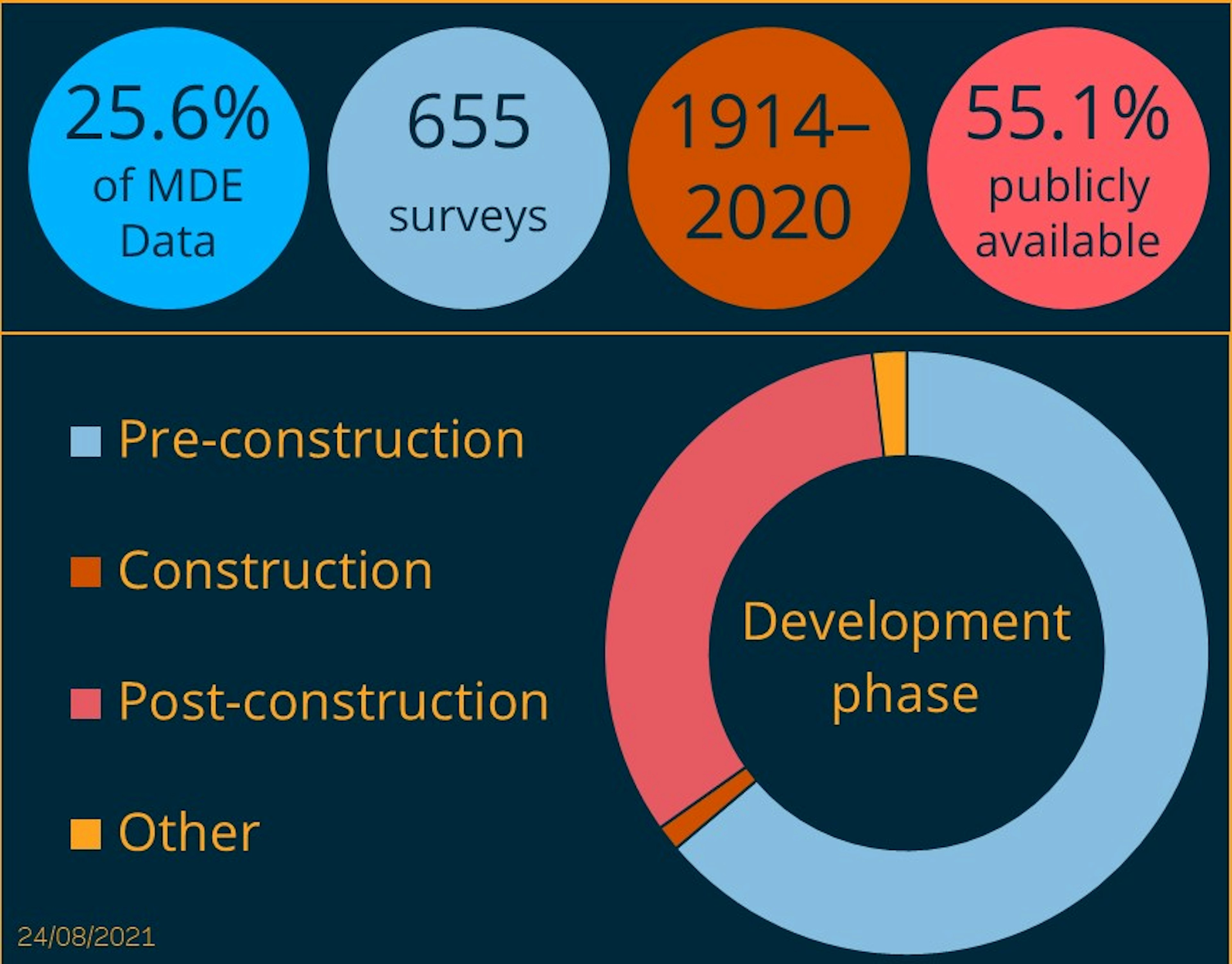
Geophysical
Survey theme: Geophysical
Physical properties of the seabed and subsurface
Geophysical surveys often compose of multiple surveys, including magnetometer, side-scan sonar data, bathymetry and seismic surveys.
The data generated by geophysical surveys during the planning stages of an offshore project forms a crucial part of the knowledge base. For an offshore wind farm this may be in ensuring that the turbine foundations are located and designed in the most appropriate and cost-effective way; for a marine aggregates license area, it may be in helping to map out where the aggregates resource is and to develop sustainable extraction plans.
Magnetometer surveys are used for a variety of purposes, but particularly the detection of ferrous objects, such as anchors, cables, shipwreck debris, unexploded ordnance (UXO) and any other magnetic objects.
Side Scan Sonar is a sonar system used for imaging objects on the seafloor. An array of accoustic waves are emitted and the time that it takes these waves to hit the seafloor and to bounce back is then used to calculate distance to the seafloor. The strength of the signals returning from the seafloor can also be used to characterise the top layer of the seabed, for example hard or rocky bottoms will reflect most of the sound, whereas soft or muddy bottoms will absorb most of the energy.
Bathymetry is the measurement of depth, but can also refer to the shape of the underwater terrain; similar to elevation and, to some extent topography, on land. Bathymetry surveys are often carried out by singlebeam or multibeam echosounders. This is a type of sonar that is used to map the seabed by measuring the reflectivity. Unlike side scan sonar, it does not measure intensity of the return signal.
Developers and operators of offshore projects undertake geophysical surveys to assess site suitability, as well as to identify changes in seabed morphology over time. Geophysical data about a site is extremely important in regards to its development, resulting in geophysical surveys being the most common type of data held the MDE.

Explore the data






